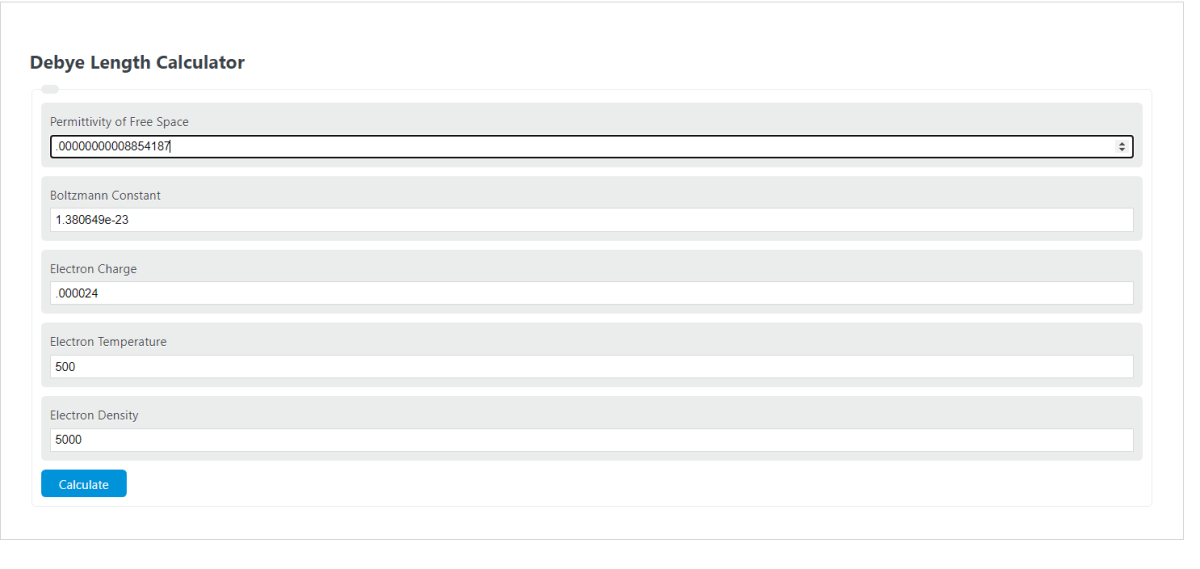Enter the permittivity of free space, Boltzmann constant, electron temperature, the density of electrons, and the charge of electrons into the calculator to determine the debye length.
- Plasma Frequency Calculator
- Net Charge Calculator
- Bond Length Calculator
- Particles Velocity Calculator (Gas)
- Excess Electrons Calculator
- Charge to Mass Ratio Calculator
Debye Length Formula
The following formula is used to calculate a debye length.
λD = SQRT ( ε0 * kB *Te / ( ne *qe^2) )
where
- λD is the Debye length,
- ε0 is the permittivity of free space,
- kB is the Boltzmann constant,
- qe is the charge of an electron,
- Te is the electron temperature
- ne is the density of electrons
What is a debye length?
Definition:
A debye length is a measure of a charge carrier’s net electrostatic effect in a solution and how far that effect persists. This is an important metric in plasma physics.
How to calculate debye length?
Example Problem:
The following example outlines how to calculate a debye length.
First, determine the permittivity of free space. In this example, this is .00000000008854187.
Next, determine the Boltzmann constant. This is known to be 1.380649×10−23 J⋅K−1.
Next, determine the charge of the electrons. This is found to be .000024.
Next, determine the electron temperature. This is measured to be 500K.
Next, determine the density of the electrons. This is calculated to be 5000.
Finally, calculate the debye length using the formula above:
λD = SQRT ( ε0 * kB *Te / ( ne *qe^2) )
λD = 4.606857137614981e-13
FAQ
What is the significance of the Debye length in plasma physics?
The Debye length is significant in plasma physics as it quantifies the screening effect of free charges on a particular charge within the plasma. It essentially defines the distance over which electrostatic effects are screened or neutralized by the plasma, allowing for the analysis of plasma behavior on a microscopic level.
How does temperature affect the Debye length?
Temperature directly affects the Debye length through the electron temperature variable in the Debye length formula. As the temperature increases, the thermal energy of the electrons increases, leading to a greater Debye length. This implies that at higher temperatures, the electrostatic effects of a charge in a plasma extend over a larger distance.
Can the Debye length be applied to materials other than plasmas?
Yes, the concept of Debye length can also be applied to electrolytes and semiconductors, where it describes the distance over which charge carriers (ions in electrolytes, electrons and holes in semiconductors) screen electrostatic potentials. This makes the Debye length a versatile tool in understanding electrical properties across different materials.
